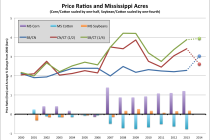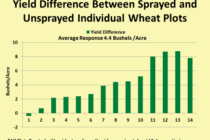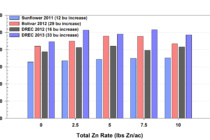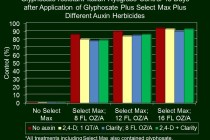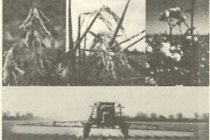👤Tom Allen, Extension Plant Pathologist
🕔23:02, 26.Jan 2014
Included in this blog post are ratings collected for frogeye leaf spot as well as Cercospora blight from the 2013 Maturity Group V soybean variety trials. Trials were conducted in Brooksville, Clarksdale (irrigated), Falkner, Longwood, Olive Branch, Raymond, Stoneville (clay and loam). The conventional/LibertyLink trial was only conducted at the Brooksville, Falkner, Longwood, and Stoneville (clay) locations. Ratings were collected based on a 0-9 and are presented from each location for each variety so a range of ratings is available across all environments encountered during the 2013 season.
Read Full Article▸

